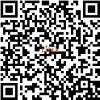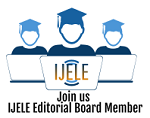(2) Zalik Nuryana
*corresponding author
AbstractAll languages contain inherent ambiguities, and foreign language learners often encounter various uncertainties when learning a new language. Ambiguity tolerance is a crucial personality trait that can significantly influence the foreign language learning process. Over time, ambiguity tolerance has gained importance due to its impact on different aspects of language learning. This study investigates the relationship between ambiguity tolerance, the optimal choice of language learning approaches, and the degree of anxiety in learning English as an additional foreign language. The research was conducted with graduate and undergraduate students from the United Arab Emirates University, specifically those studying in the education field and enrolled in an English foreign language learning course. A quantitative Google survey was administered, gathering data from 270 students, which was subsequently analyzed using SmartPLS 3. The results revealed that ambiguity tolerance is negatively associated with students' anxiety levels and positively correlated with their choice of language learning strategies, ultimately enhancing their oral speech accuracy. This study offers valuable insights for academicians to design strategies that promote ambiguity tolerance among learners, thereby boosting their motivation and reducing anxiety levels. It also contributes significantly to the body of knowledge for researchers in this field.
KeywordsAmbiguity Tolerance; English as a Foreign Language; Learners Anxiety Level; Accuracy of Oral Speech; choice of language learning strategies
|
DOIhttps://doi.org/10.31763/ijele.v6i1.1366 |
Article metrics10.31763/ijele.v6i1.1366 Abstract views : 860 | PDF views : 240 |
Cite |
Full Text Download Download
|
References
[1] P. Pannen, “Pedoman Penyelenggaraan Pendidikan Profesi Guru,†Jakarta: Direktorat Jenderal Pembelajaran dan Kemahasiswaan Kementerian Riset, Teknologi, dan Pendidikan Tinggi. 2017.
[2] F. N. Arifa and U. S. Prayitno, “Peningkatan Kualitas Pendidikan: Program Pendidikan Profesi Guru Prajabatan dalam Pemenuhan Kebutuhan Guru Profesional di Indonesia,†J. Aspir., vol. 10, no. 1, pp. 1–17, Jun. 2019, doi: 10.22212/aspirasi.v10i1.1229.
[3] E. Triwinarni, “Evaluasi program pendidikan profesi guru (PPG) pendidikan agama islam di UIN Sunan Kalijaga Yogyakarta,†in Prosiding Interdisciplinary Postgraduate Student Conference, 2017, pp. 219–223.
[4] H. Zulfitri, N. P. Setiawati, and I. Ismaini, “Pendidikan profesi guru (PPG) sebagai upaya meningkatkan profesionalisme guru,†Ling. J. Bhs. dan Sastra, vol. 19, no. 2, pp. 130–136, 2019.
[5] H. A. Sa’Diyah, “Pendidikan Profesi Guru (PPG) Sebagai Upaya Peningkatan Profesional Guru,†Seri Publ. Pembelajaran, vol. 1, no. 1, pp. 1–12, 2023. doi: 10.31219/osf.io/a2t8q
[6] Indahyani, S. Syamsuddhuha, and M. Musdalifah, “Pengaruh Manajemen Sumber Daya Manusia dan Manajemen Prasarana terhadap Mutu Pendidikan,†Nazzama J. Manag. Educ., vol. 1, no. 2, pp. 135–146, Mar. 2022, doi: 10.24252/jme.v1i2.28011.
[7] I. Suraji, “Urgensi kompetensi guru,†in Forum Tarbiyah, 2012, vol. 10, no. 2, pp. 236–251.
[8] N. Nuriyah, “Evaluasi pembelajaran: sebuah kajian teori,†Edueksos J. Pendidik. Sos. Ekon., vol. 3, no. 1, pp. 73–86, 2016.
[9] M. O. Pandjaitan, “Penilaian Berbasis Kelas dengan Portfolio,†A Seminar paper presented at Indonesia University of Education. 2003.
[10] Idrus L, “Evaluasi dalam proses pembelajaran,†Adaara J. Manaj. Pendidik. Islam, vol. 9, no. 2, pp. 920–935, Aug. 2019, doi: 10.35673/ajmpi.v9i2.427.
[11] M. Arifin, Mengelola Sekolah Berbasis Entrepreneurship. Jogyakarta: Ar-Ruzzmedia, 2016.
[12] S. Sahyar, “Pengaruh Kompetensi Dosen dan Proses Pembelajaran terhadap Kepuasan Mahasiswa,†J. Pendidik. Ekon. dan Bisnis, vol. 1, no. 03, pp. 133–139, 2009.
[13] E. Porter Michael, Competitive advantage: creating and sustaining superior performance. The Free Press of Glencoe, 1985.
[14] C. O. Longenecker and S. S. Ariss, “Creating competitive advantage through effective management education,†J. Manag. Dev., vol. 21, no. 9, pp. 640–654, Nov. 2002, doi: 10.1108/02621710210441649.
[15] M. Isnaini, D. K. Wardani, and L. Noviani, “Pengaruh kompetensi dosen dan fasilitas belajar terhadap kepuasan mahasiswa pendidikan ekonomi fkip uns,†J. Pendidik. Bisnis Dan Ekon., vol. 1, no. 2, 2016.
[16] C. S. Long, Z. Ibrahim, and T. O. Kowang, “An Analysis on the Relationship between Lecturers’ Competencies and Students’ Satisfaction,†Int. Educ. Stud., vol. 7, no. 1, pp. 37–46, Dec. 2013, doi: 10.5539/ies.v7n1p37.
[17] E. Mulyasa, Manajemen berbasis sekolah: konsep, strategi dan implementasi. Bandung: Remaja Rosdakarya, 2004.
[18] R. N. Fadila, E. A. Lutfiani, I. S. R, N. Veronika, D. Rachmanto, and N. Arfinanti, “Efektivitas pengelolaan sumber daya sekolah dalam meningkatkan mutu pendidikan,†J. Akuntabilitas Manaj. Pendidik., vol. 8, no. 1, pp. 81–88, Aug. 2020, doi: 10.21831/jamp.v8i1.28997.
[19] R. Ariyani, “Manajemen sarana dan prasarana dalam meningkatkan mutu pendidikan di SLB Buah Hati kota Jambi,†Al-Afkar Manaj. Pendidik. Islam, vol. 6, no. 2, pp. 109–132, Sep. 2018, doi: 10.32520/afkar.v6i2.239.
[20] J. Cresswell, “Educational research : planning, conducting, and evaluating quantitative and qualitative research.†Educational Research, pp. 1–12, 2012.
[21] J. Henseler, “Partial least squares path modeling: Quo vadis?,†Qual. Quant., vol. 52, no. 1, pp. 1–8, Jan. 2018, doi: 10.1007/s11135-018-0689-6.
[22] C. Demetriou, B. U. Ozer, and C. A. Essau, “Selfâ€Report Questionnaires,†in The Encyclopedia of Clinical Psychology, Wiley, 2015, pp. 1–6. doi: 10.1002/9781118625392.wbecp507
[23] J. W. Cresswell, Penelitian Kualitatif dan Desain Riset: memilih diantara lima pendekatan. Yogyakarta: Pustaka Pelajar, 2015.
[24] D. GTK, Pedoman Penjaminan Mutu PPG. Jakarta, 2022.
[25] J. F. Hair, J. J. Risher, M. Sarstedt, and C. M. Ringle, “When to use and how to report the results of PLS-SEM,†Eur. Bus. Rev., vol. 31, no. 1, pp. 2–24, Jan. 2019, doi: 10.1108/EBR-11-2018-0203.
[26] A. Muhson, “Analisis Statistik Dengan SmartPLS: Path Analysis, Confirmatory Factor Analysis, & Structural Equation Modeling.†nd, 2022.
[27] S. Yamin, Olah data Statistik SMARTPLS 3 SMARTPLS 4 AMOS & STATA (Mudah & Praktis) Edisi III. Dewangga Energi Internasional Publishing, 2023.
[28] J. F. Hair, G. T. M. Hult, C. M. Ringle, M. Sarstedt, N. P. Danks, and S. Ray, Partial Least Squares Structural Equation Modeling (PLS-SEM) Using R. Cham: Springer International Publishing, 2021. doi: 10.1007/978-3-030-80519-7
[29] M. Ghasemy, V. Teeroovengadum, J.-M. Becker, and C. M. Ringle, “This fast car can move faster: a review of PLS-SEM application in higher education research,†High. Educ., vol. 80, no. 6, pp. 1121–1152, Dec. 2020, doi: 10.1007/s10734-020-00534-1.
[30] W. W. Chin, “The partial least squares approach to structural equation modeling,†Mod. methods Bus. Res., vol. 295, no. 2, pp. 295–336, 1998.
[31] G. Franke and M. Sarstedt, “Heuristics versus statistics in discriminant validity testing: a comparison of four procedures,†Internet Res., vol. 29, no. 3, pp. 430–447, Jun. 2019, doi: 10.1108/IntR-12-2017-0515.
[32] S. Ogbeibu, C. J. C. Jabbour, J. Gaskin, A. Senadjki, and M. Hughes, “Leveraging STARA competencies and green creativity to boost green organisational innovative evidence: A praxis for sustainable development,†Bus. Strateg. Environ., vol. 30, no. 5, pp. 2421–2440, 2021. doi: 10.1002/bse.2754
[33] K. Schermelleh-Engel, H. Moosbrugger, and H. Müller, “Evaluating the fit of structural equation models: Tests of significance and descriptive goodness-of-fit measures,†Methods Psychol. Res. online, vol. 8, no. 2, pp. 23–74, 2003.
[34] M. Sarstedt, P. Wilczynski, and T. C. Melewar, “Measuring reputation in global markets—A comparison of reputation measures’ convergent and criterion validities,†J. World Bus., vol. 48, no. 3, pp. 329–339, Jul. 2013, doi: 10.1016/j.jwb.2012.07.017.
[35] M. Wetzels, G. Odekerken-Schröder, and C. Van Oppen, “Using PLS path modeling for assessing hierarchical construct models: Guidelines and empirical illustration,†MIS quarterly. JSTOR, pp. 177–195, 2009. doi: 10.2307/20650284
[36] C. Alarioâ€Hoyos, E. Gómezâ€Sánchez, M. L. Boteâ€Lorenzo, J. I. Asensioâ€Pérez, G. Vegaâ€Gorgojo, and A. Ruizâ€Calleja, “From faceâ€toâ€face to distance LMSâ€mediated collaborative learning situations with GLUE!,†Comput. Appl. Eng. Educ., vol. 23, no. 4, pp. 527–536, Jul. 2015, doi: 10.1002/cae.21623.
[37] D. Basten and T. Haamann, “Approaches for Organizational Learning: A Literature Review,†SAGE Open, vol. 8, no. 3, p. 215824401879422, Apr. 2018, doi: 10.1177/2158244018794224.
[38] R. M. Ryan and E. L. Deci, “Self-determination theory and the facilitation of intrinsic motivation, social development, and well-being.,†Am. Psychol., vol. 55, no. 1, pp. 68–78, 2000, doi: 10.1037/0003-066X.55.1.68.
[39] F. N. Matin, Manajemen Sarana dan Prasarana Pendidikan Konsep dan Aplikasinya. Jakarta: PT Raja Grafindo Persada, 2016.
[40] H. M. Farmer and J. Ramsdale, “Teaching Competencies for the Online Environment | Enseigner les compétences pour l’environnement en ligne,†Can. J. Learn. Technol. / La Rev. Can. l’apprentissage la Technol., vol. 42, no. 3, Aug. 2016, doi: 10.21432/T2V32J.
[41] J. Musfah, Peningkatan kompetensi guru: Melalui pelatihan dan sumber belajar teori dan praktik. Jakarta: Kencana, 2012.
[42] L. Bardach and R. M. Klassen, “Smart teachers, successful students? A systematic review of the literature on teachers’ cognitive abilities and teacher effectiveness,†Educ. Res. Rev., vol. 30, p. 100312, Jun. 2020, doi: 10.1016/j.edurev.2020.100312.
[43] W. Musfiqon, Andiek, Pengembangan dan Media Sumber Pembelajaran. Jakarta: Raja Graffindo Persada, 2016.
[44] M. Yamin, Manajemen Mutu Kurikulum Pendidikan. Jakarta: Rajawali Pers, 2012.
[45] G. Odhiambo, “Elusive search for quality education,†Int. J. Educ. Manag., vol. 22, no. 5, pp. 417–431, Jun. 2008, doi: 10.1108/09513540810883159.
[46] C. Queen, “Applying Charismatic Leadership to Support Learner Engagement in Virtual Environments: Teaching and Learning in a Time of Crisis,†Pedagog. Heal. Promot., vol. 9, no. 3, pp. 158–160, Sep. 2023, doi: 10.1177/23733799221107613.
Refbacks
- There are currently no refbacks.
Copyright (c) 2024 Ghadah Al Murshidi, Zalik Nuryana

This work is licensed under a Creative Commons Attribution-ShareAlike 4.0 International License.

International Journal of Education and Learning
ISSNÂ 2684-9240
Published by Association for Scientific Computing Electronics and Engineering (ASCEE)
W : http://pubs2.ascee.org/index.php/ijele
E : zalik@ascee.org

This work is licensed under a Creative Commons Attribution-ShareAlike 4.0 International License.






















